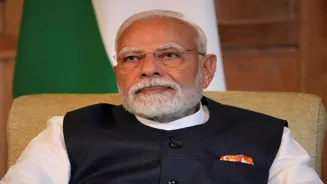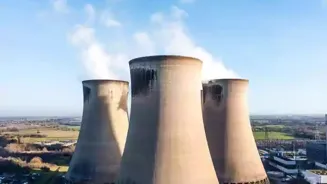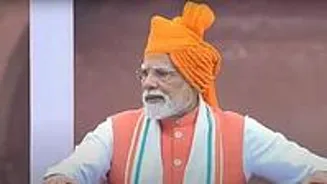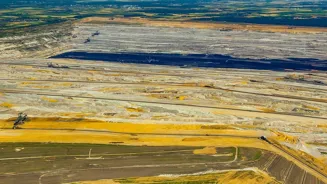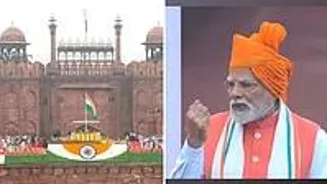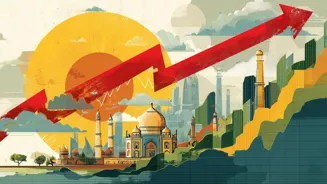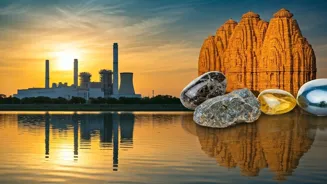What is the story about?
In his Independence Day address, Prime Minister Narendra Modi highlighted that India has already met its 50% clean energy target ahead of schedule and announced new initiatives, including the National Deepwater Aspiration Mission
and plans to expand nuclear power generation.
PM Modi said India plans to increase its nuclear power generation capacity tendfold over the next two decades, with work underway on 10 new nuclear reactors. He described nuclear energy as critical for meeting the nation's long-term energy needs and highlighted the ongoing efforts in green energy capacity building.
The Prime Minister noted that solar energy production in India has risen 30-fold over the past 11 years. He said new dams are being built
to expand hydropower and improve clean energy access, while thousands of crores are being invested in the Green Hydrogen Mission.
According to the Ministry of Energy and Environment, India ranks fourth globally in renewable energy installed capacity, third in solar, fourth in wind, and has the fastest-growing renewable energy programme in the world.
Here's a look at India's non-fossil fuel installed energy capacity in India:
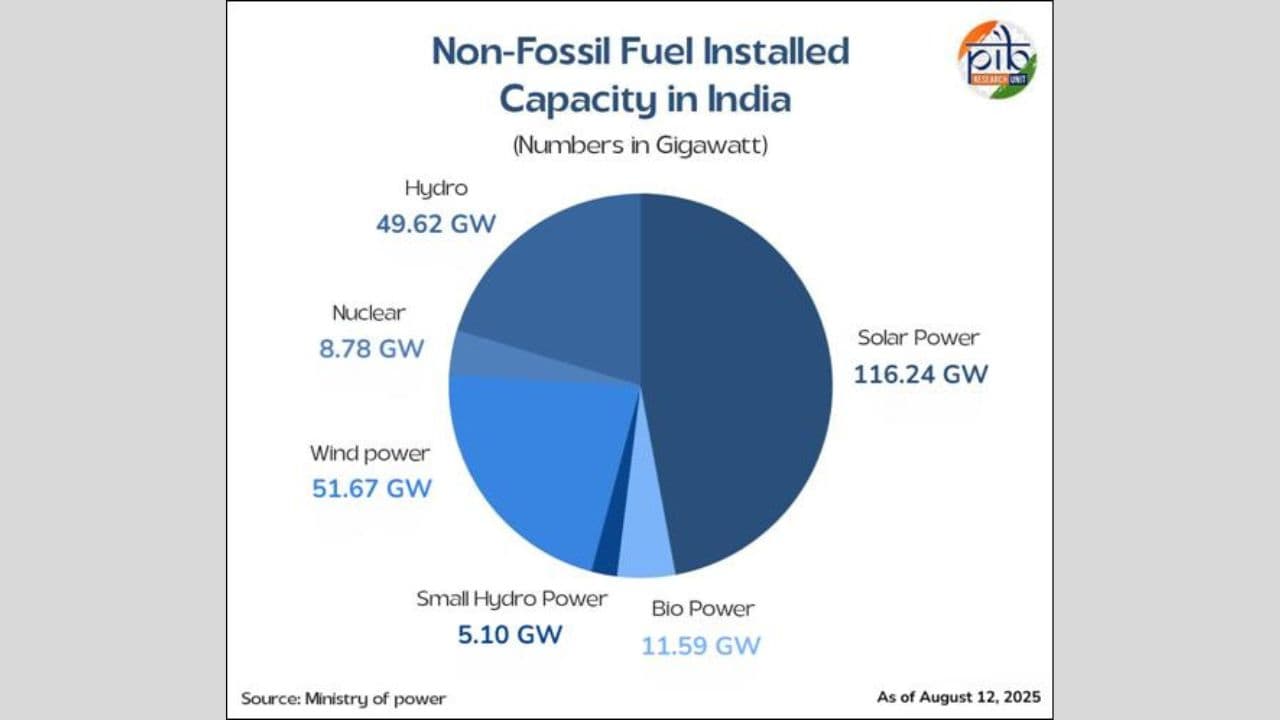
In his speech, PM Modi stressed the importance of
reducing dependence on imported fossil fuels, noting that a significant portion of the Union Budget is spent on purchasing petrol, gas and diesel.
He said that if the country were not dependent on such imports, these funds could instead be used for youth development, poverty reduction, and rural welfare. "However, we have to give the money to foreigners. Now, we work towards becoming self-reliant," he said.
Source: Tata Mutual Funds
The National Deepwater Aspiration Mission will focus on reducing energy
imports, through the expansion of solar, hydro, hydrogen, and nuclear power.
PM Modi said exploration for critical minerals is underway at more than 1,200 sites, supported by a planned National Exploration Mission.
The Lok Sabha recently passed the Mines and Minerals (Development and Regulation) Amendment Bill, 2025, aimed at strengthening the supply of critical minerals and increasing state revenues.
India's energy capacity
PM Modi said India plans to increase its nuclear power generation capacity tendfold over the next two decades, with work underway on 10 new nuclear reactors. He described nuclear energy as critical for meeting the nation's long-term energy needs and highlighted the ongoing efforts in green energy capacity building.
The Prime Minister noted that solar energy production in India has risen 30-fold over the past 11 years. He said new dams are being built
According to the Ministry of Energy and Environment, India ranks fourth globally in renewable energy installed capacity, third in solar, fourth in wind, and has the fastest-growing renewable energy programme in the world.
Here's a look at India's non-fossil fuel installed energy capacity in India:

Emphasis on self-reliance
In his speech, PM Modi stressed the importance of
He said that if the country were not dependent on such imports, these funds could instead be used for youth development, poverty reduction, and rural welfare. "However, we have to give the money to foreigners. Now, we work towards becoming self-reliant," he said.
| Year | India’s crude oil imports (as a % of demand) |
| FY19 | 83.8% |
| FY20 | 85% |
| FY21 | 84.4% |
| FY22 | 85.5% |
| FY23 | 87.4% |
| FY24 | 87.8% |
| FY25 | 88.8% |
Source: Tata Mutual Funds
The National Deepwater Aspiration Mission will focus on reducing energy
PM Modi said exploration for critical minerals is underway at more than 1,200 sites, supported by a planned National Exploration Mission.
The Lok Sabha recently passed the Mines and Minerals (Development and Regulation) Amendment Bill, 2025, aimed at strengthening the supply of critical minerals and increasing state revenues.
Do you find this article useful?
